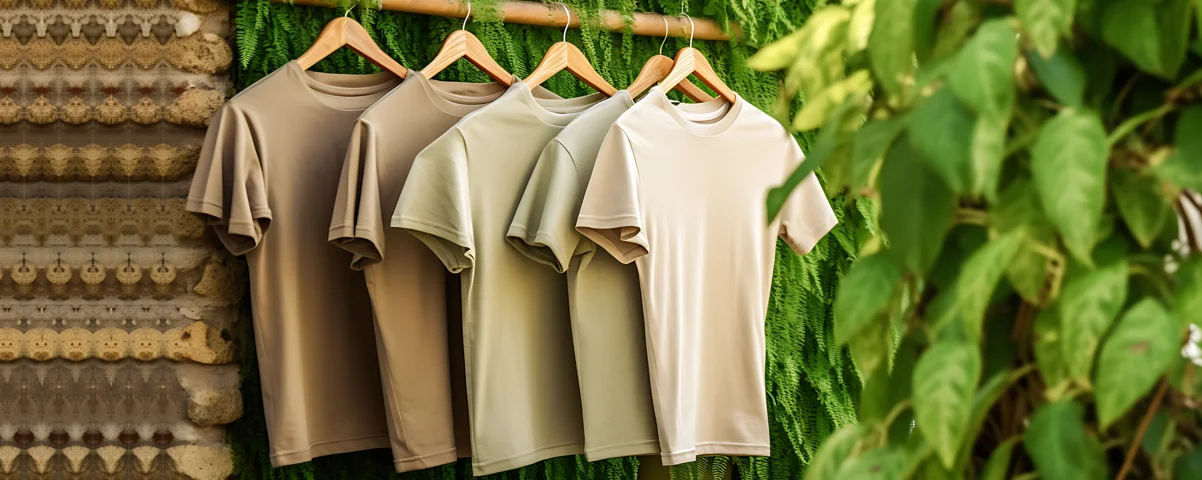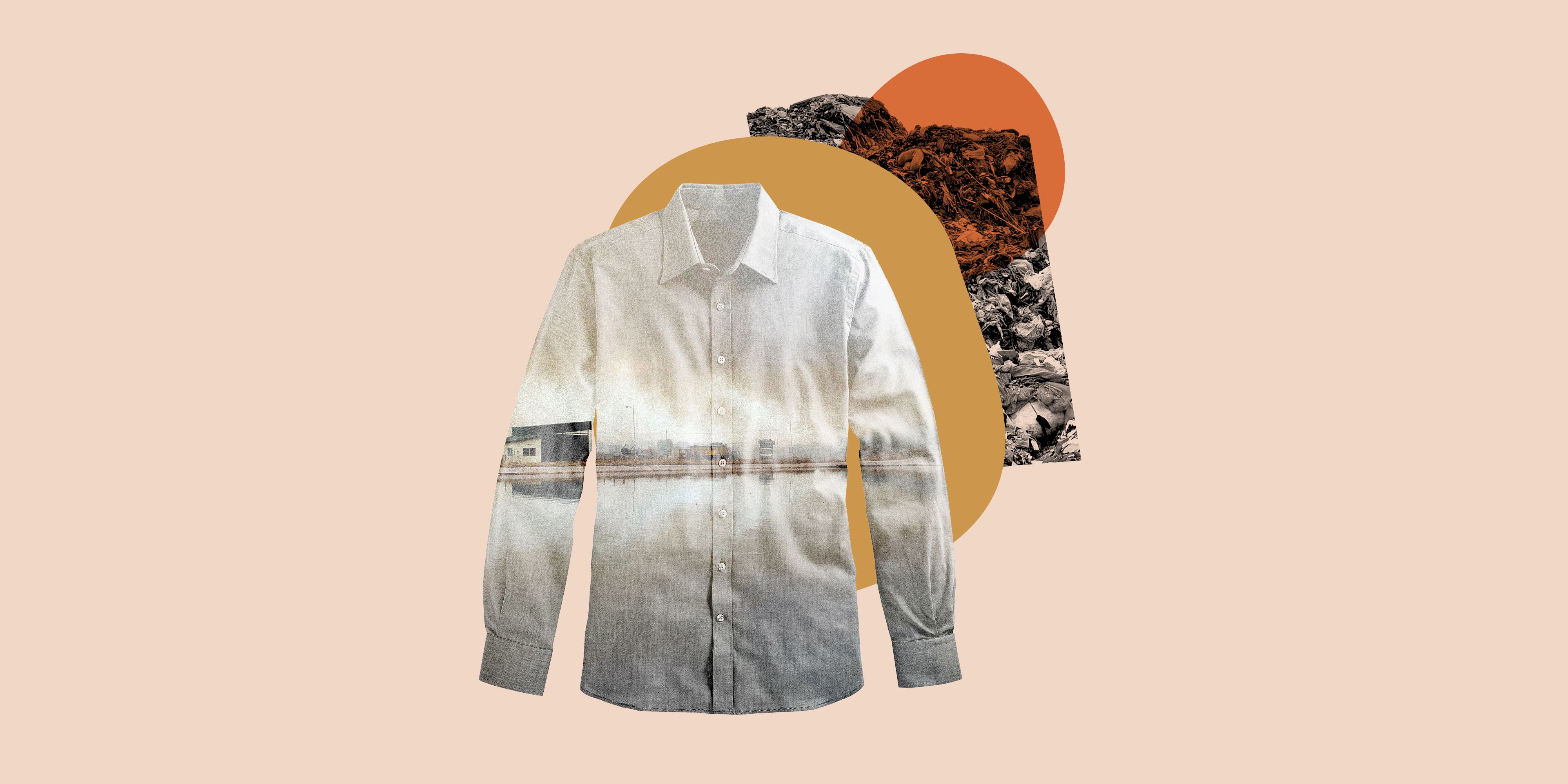Supporting Local Cape Town Sustainable Fashion for a Greener Future
Wiki Article
Keep Ahead of the Contour by Discovering Cutting-edge Style Fads
In an industry as dynamic as fashion, remaining in advance entails more than simply complying with present fads-- it requires an exploration of development. Smart fabrics, as an example, are transforming garments into functional masterpieces, while 3D printing is transforming design procedures with its personalized, waste-reducing capacities. As sustainability becomes a cornerstone, developments like environment-friendly materials and circular fashion methods are improving ecological responsibility - Cape Town Sustainable Fashion. Furthermore, the merging of modern technology and fashion heralds a new age of customer interaction. Just how, after that, can these emerging trends redefine the future of style, and what implications do they hold for brands looking for to flourish in this advancing landscape?
Embracing Smart Textiles
Over the last few years, the fashion business has observed a transformative change with the combination of wise fabrics, an advanced innovation that mixes modern technology with textile. This development stands for not just a blend of aesthetics and performance however additionally a significant jump in the direction of sustainability and customization in vogue. Smart fabrics, additionally understood as e-textiles, installed innovative electronics such as sensing units and conductive threads within the fabric, enabling garments to engage with the setting or the wearer.These textiles are made to keep track of physiological parameters, such as heart price or body temperature level, giving real-time health and wellness analytics. Past health and wellness applications, smart fabrics are also being utilized for flexible clothing, which can change color or pattern in response to environmental stimulations, therefore offering a vibrant style experience.
In addition, the growth of energy-harvesting textiles that generate power from movement or sunlight is paving the way for self-dependent wearable technology. This advancement is attracting eco aware customers and developers intending to decrease the ecological impact of style. As r & d in this area advancement, clever textiles are anticipated to come to be increasingly prevalent, reshaping the landscape of contemporary style with their multifunctional capabilities.
The Increase of 3D Printing
Changing the production landscape, 3D printing has arised as a game-changer in the fashion business. This advanced innovation has enabled designers to push the limits of creativity, producing elaborate and customized garments that were formerly inconceivable. By leveraging electronic layout and additive production, 3D printing helps with the production of complicated geometries and patterns, permitting developers to experiment with brand-new appearances and structures.A notable benefit of 3D printing in vogue is its ability to generate on-demand, lessening waste and decreasing supply needs. This efficiency not just maximizes manufacturing procedures but likewise allows for quick prototyping, enabling developers to bring their visions to life in a much shorter timeframe. Additionally, 3D printing supports customization to a degree unrivaled by conventional techniques, providing special styles and individualized fits tailored to individual consumer choices.
The rise of 3D printing has actually additionally equalized fashion, making it obtainable to arising developers who can currently make high-grade pieces without considerable monetary investment in standard manufacturing framework. As innovation continues to breakthrough, the apparel industry is positioned to harness the complete potential of 3D printing, exploring new products and methods that will unquestionably redefine just how style is conceived and created.
Sustainable Fashion Developments
As the garment industry grapples with the pushing demand for environmental responsibility, sustainable fashion developments have arised at the leading edge of transformative change. The growing awareness of ecological effect has sustained a shift towards even more eco-conscious practices and products. Designers and brands are currently prioritizing sustainability, integrating methods that decrease waste and reduce carbon footprints.One considerable growth is the increase of circular style, which emphasizes recycling and upcycling to expand the lifecycle of garments. This method not just minimizes waste but likewise encourages customers to embrace an extra conscious strategy to clothes intake. Furthermore, making use of sustainable materials, such as organic cotton, hemp, and recycled polyester, read has gotten traction. These materials call for less water and power throughout production, considerably lessening environmental impact.
One more breakthrough lies in the fostering of ingenious dyeing methods that utilize natural dyes or waterless procedures, therefore decreasing the large amounts of water and chemicals typically utilized in fabric dyeing. Moreover, improvements in biotechnology have led to the development of lab-grown natural leather and materials, supplying cruelty-free and environmentally friendly options to standard products. Through these introducing initiatives, the apparel industry is making meaningful strides towards a more sustainable future.

Tech-Integrated Clothing
Tech-integrated apparel stands for a cutting-edge blend of fashion and technology, improving just how individuals communicate with their clothing. This cutting-edge domain is marked by the incorporation of wise textiles and embedded electronic components, enhancing both capability and visual appeal. From fitness trackers installed in sports apparel to heated jackets managed through smart device applications, tech-integrated apparel supplies consumers extraordinary comfort and adaptability.Pioneering brands are driving this trend, concentrating on creating garments that reply to environmental stimulations or customer commands. As an example, some garments can transform shade or pattern in feedback to temperature level changes, while others include biometric sensing units to check wellness metrics like heart price or stress and anxiety degrees. The smooth combination of technology into fabrics additionally includes environmental sustainability, with initiatives to establish self-cleaning fabrics or garments that get used to climate condition, thus minimizing the demand for numerous layers.
Furthermore, the arrival of wearable modern technology is not simply restricted to garments however includes devices like watches and glasses, additional widening the scope of tech-integrated fashion. As the sector remains to innovate, the possibility for personalization and personalization in garments grows, offering customers distinct, tech-enhanced style experiences that satisfy their individual demands and preferences.
Future of Virtual Style
In recent years, the future of virtual style has become a transformative force within the market, leveraging developments in electronic innovation to redefine how style is created, experienced, and eaten. By integrating increased reality (AR), digital reality (VIRTUAL REALITY), and 3D design devices, designers can currently craft immersive and interactive experiences that go beyond traditional style borders. Online style permits the production of garments that exist entirely in electronic environments, supplying unlimited opportunities for development without the constraints of physical production.This digital change not just provides possibilities for creative expression however also addresses sustainability issues inherent in traditional style techniques. browse this site Cape Town Sustainable Fashion. By eliminating the requirement for physical sources, virtual fashion minimizes waste and decreases carbon footprints. Additionally, the surge of digital fashion lines up with the boosting customer need for tailored and distinct experiences, as online garments can be personalized and customized to specific choices easily

Verdict
The garment industry's future depend on the integration of sustainable methods and innovative modern technologies - Cape Town Sustainable Fashion. Smart textiles and tech-integrated garments are enhancing capability, recommended you read while 3D printing provides possibilities for personalization and waste reduction. Lasting fashion, via environmentally friendly products and circular techniques, shows a commitment to ecological stewardship. Furthermore, digital style is positioned to redefine consumer communications. Adjusting to these trends is crucial for brands seeking to continue to be pertinent and affordable in this rapidly progressing landscape.In current years, the style sector has actually witnessed a transformative shift with the combination of clever fabrics, an advanced advancement that mixes modern technology with textile.As the style industry grapples with the pressing need for environmental obligation, lasting style technologies have actually arised at the forefront of transformative change.In recent years, the future of virtual fashion has emerged as a transformative pressure within the market, leveraging improvements in electronic innovation to redefine just how fashion is created, experienced, and consumed. The rise of virtual style straightens with the raising customer need for one-of-a-kind and tailored experiences, as digital garments can be tailored and customized to specific choices with convenience.
The style market's future lies in the integration of lasting techniques and cutting-edge innovations.
Report this wiki page